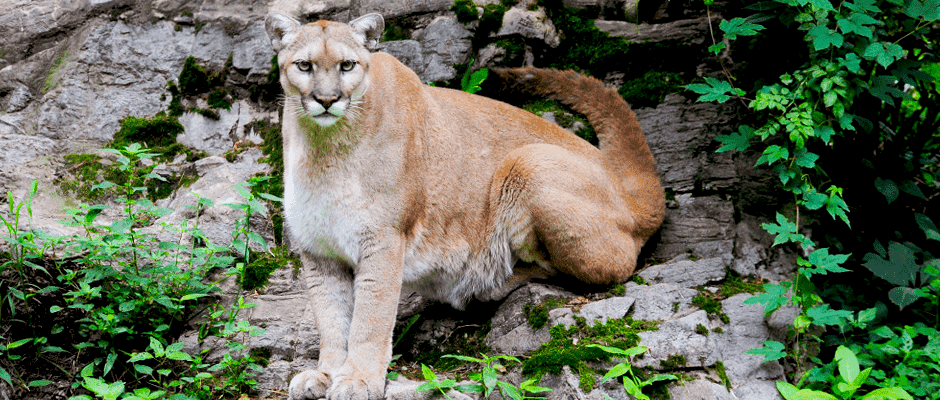Share this article
Mountain Lions Not Just a Tall Tale in Adirondacks
Less than five years ago, a large muscled cat with striking eyes rimmed with black and a tail as long as almost half its over four-foot long body, was hit by a car in a residential area of Greenwich, Conn.
DNA analysis of the mountain lion’s (Puma concolor) scat revealed that the animal had traveled 1,800 miles in the last seven years to areas such as Minnesota, Wisconsin and, surprisingly, the Adirondacks in New York, where not much is known about the mountain lion population. “There’s a lot of debate between local folks and the New York State Department of Environmental Conservation about whether there is a mountain lion population or not,” said Elizabeth McGovern, lead author of a recent study published in the Wildlife Society Bulletin on people’s perception of mountain lions in the area. “We also don’t know if they’re native, formerly captive animals, or if there is anything there at all.”
Mountain lions were historically native to the area and are currently listed as extinct in New York, and McGovern — a member of The Wildlife Society — and her coauthors that work for the Wildlife Conservation Society set out to determine whether people would be supportive of mountain lions being reintroduced to the Adirondacks, either naturally or through assisted migration. As part of their study, the team administered questionnaires in person to Adirondack residents and individuals visiting the area in the summer of 2013 and also conducting telephone surveys to New York State residents in winter 2014.
One thing the team tested was whether people considered the presence of mountain lions as an example of good stewardship of the land. They found that many people thought the animals would be a good indicator of the health of the land if they were to come back on their own. However, fewer people were interested in reintroduction efforts.
The most interesting finding, according to McGovern, was that the less people knew about the species, the higher risk they perceived about them. They also found that people who were more knowledgeable and perceived lower risk were more likely to support natural colonization. Further, women were more likely to perceive risks associated with mountain lions compared to men. But, “for the most part, people were fairly similar,” in their perceptions, she said. Several respondents felt they had seen a mountain lion in the past, however fewer people reported their sightings to the New York DEC, and if they did, some seemed to feel as if they weren’t taken seriously.
While McGovern’s research focused on public perception of mountain lions, she said a big question is if it’s possible for the species to make a comeback in the area. Recent research on suitability of habitat in the Northeast for mountain lions seems to point to a section of the Adirondacks as crucial habitat. But if the animals are reintroduced, they can travel to surrounding areas including Vermont, Connecticut and Ontario. “We need to find out how people feel about this and if they’re interested in making this happen,” McGovern said, adding that it’s also important to determine if the landscape can support the animals — and how many it can support.
The study also suggests public education might benefit people who could potentially encounter a mountain lion in the wild, while hiking, for instance. “This can get everyone on the same page and provide a realistic idea about what risks there might be and what precautions to take as well as how likely it is to happen and what you can expect.”
Header Image: A mountain lion in the western U.S. stands on a rock. Image Credit: Julie Larson Maher © Wildlife Conservation Society








